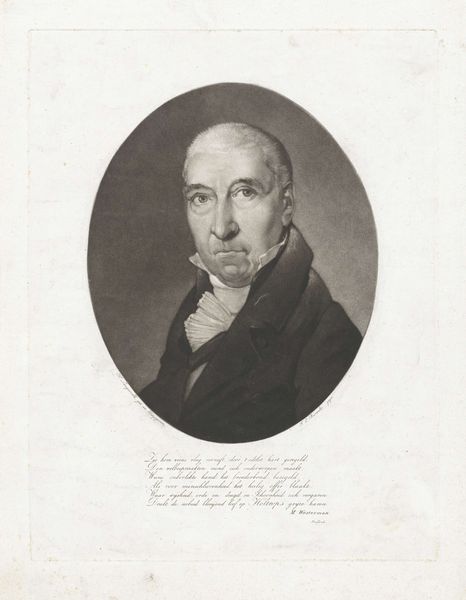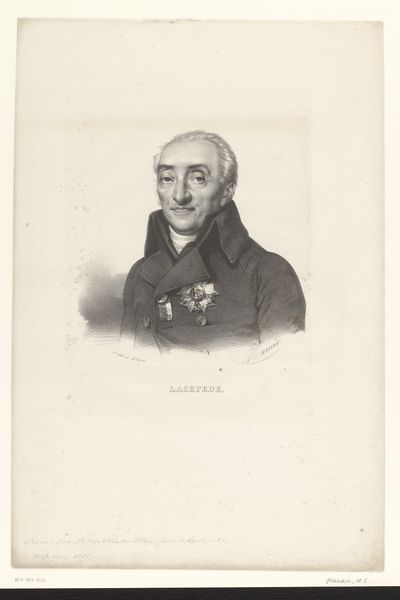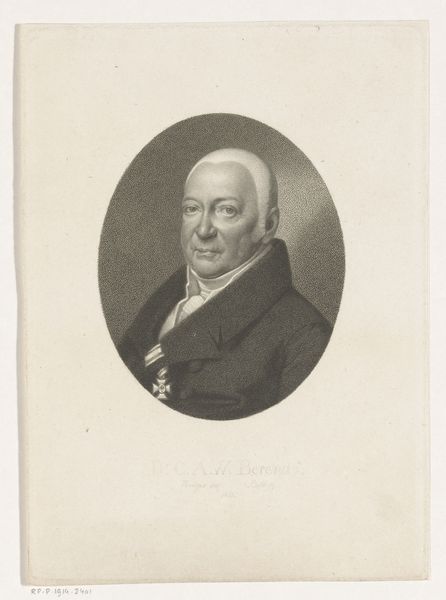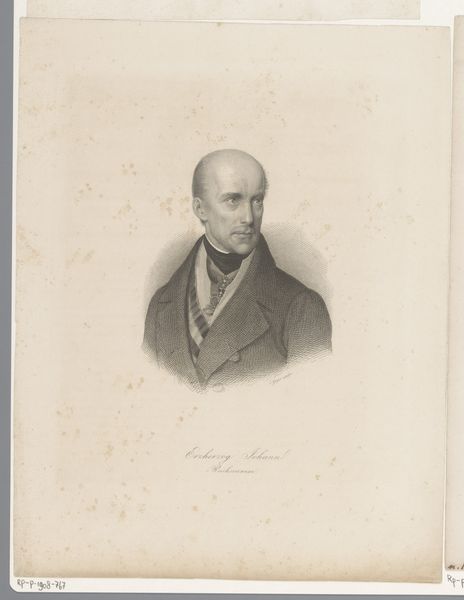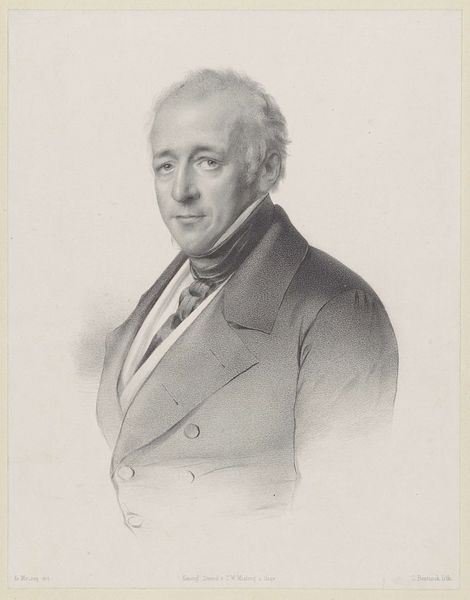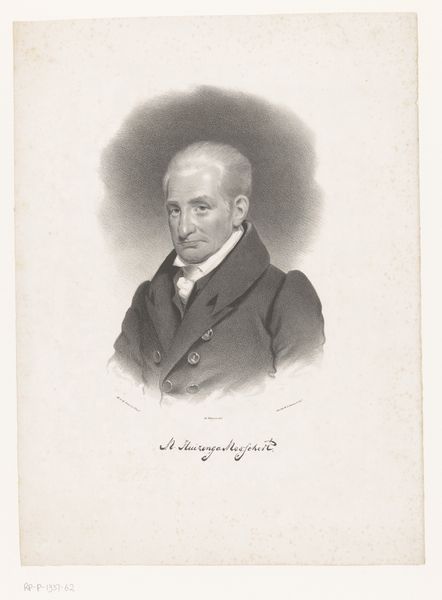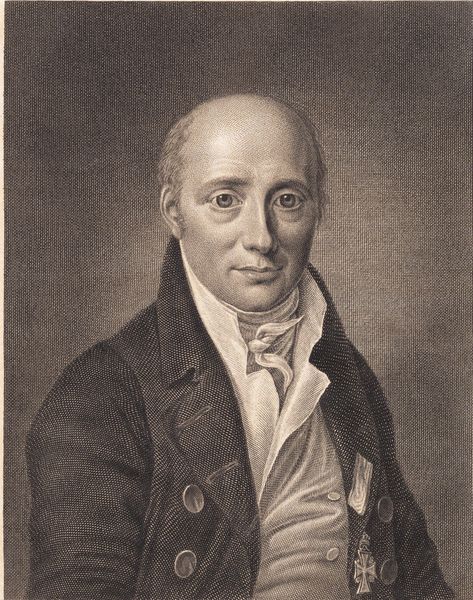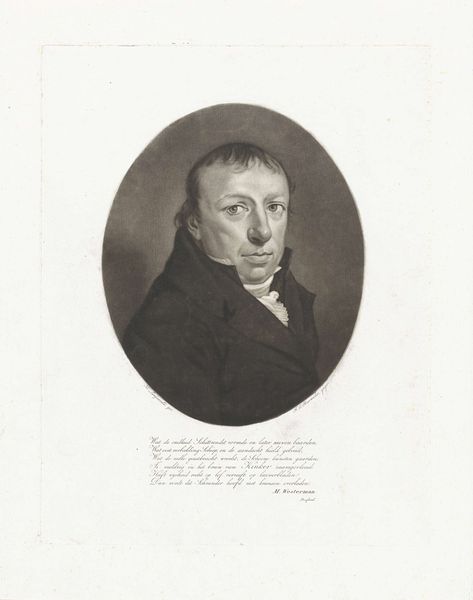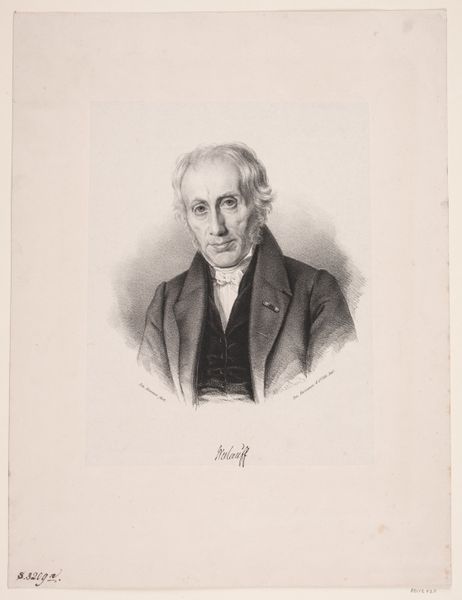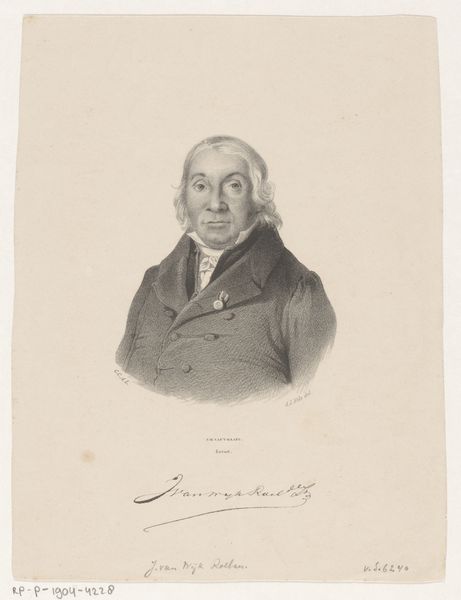
drawing, pencil
#
portrait
#
pencil drawn
#
drawing
#
portrait reference
#
pencil drawing
#
pencil
#
portrait drawing
#
academic-art
#
realism
Dimensions: height 320 mm, width 235 mm
Copyright: Rijks Museum: Open Domain
Curator: Welcome to the Rijksmuseum. Before us, we have a pencil drawing, “Portret van Willem Holtrop.” The artwork is dated from 1827 to 1905. Editor: Immediately, there's a strong sense of gravity emanating from this portrait. The detail captured with just pencil is quite striking. The sitter appears rather stern, doesn’t he? Curator: Indeed. Consider the context. This drawing offers insight into the aspirations of the rising middle class in the 19th century. Portraiture, once exclusively for the elite, was becoming a way for individuals like Willem Holtrop to assert their status and legacy. Editor: I wonder about that assertion of status. Look at his tightly crossed arms, the slight downturn of his lips, the direct gaze. Is it defiance or a reflection of the social pressures and expectations placed upon men of that era? Perhaps the pressures of maintaining a respectable image, in that time? Curator: That’s a valid point. The rigid posture and somewhat severe expression could reflect the social codes of the time. This drawing’s place within academic art speaks to the conventions that shaped artistic representation of power and social standing during that period. How men were expected to appear versus how they felt may have caused a tension which resulted in these mannerisms. Editor: Also, is this realism, as it’s tagged? To what extent is this "real”? What might this subject have liked to hide? Were artists encouraged or allowed to depict men with all their supposed flaws, or were subjects presented and viewed through the lens of desired strength? This may not actually capture his daily face at all. Curator: Well, realism as a movement was very focused on truthful representation, especially as opposed to Romantic idealization, of course, the museum's understanding of realism as it developed then can be quite different from the concept of "realness" now, though, can’t it? Editor: That’s right. Overall, I find myself quite moved by the skill in this artwork, even as the stiffness in this “real” representation hints at how the powerful exercised control, literally shaping their images, the narrative presented, and our view even to this day. Curator: I agree; it leaves us with more to ponder than we might have expected, based on a seemingly straightforward, though quite skillfully rendered, drawing.
Comments
No comments
Be the first to comment and join the conversation on the ultimate creative platform.
